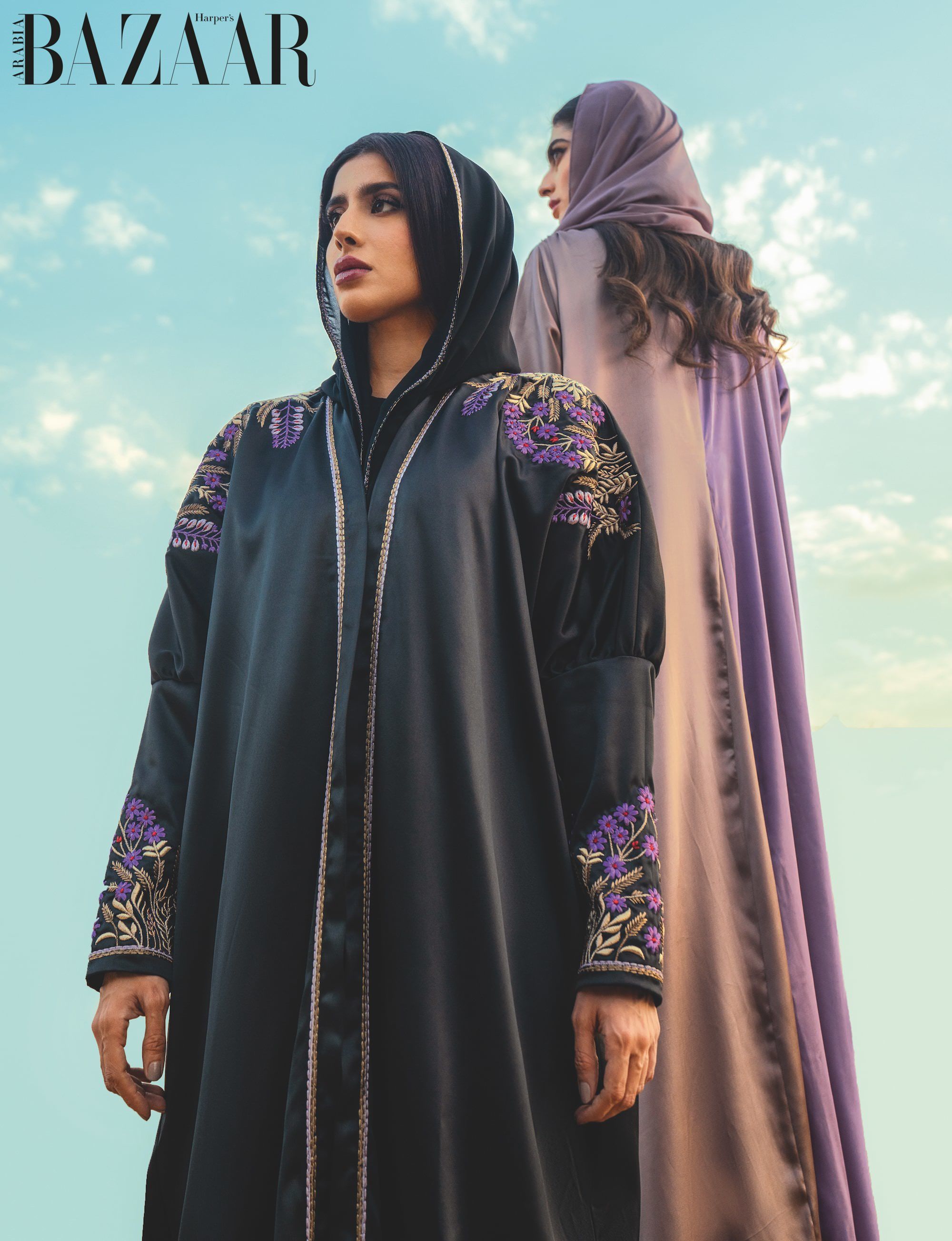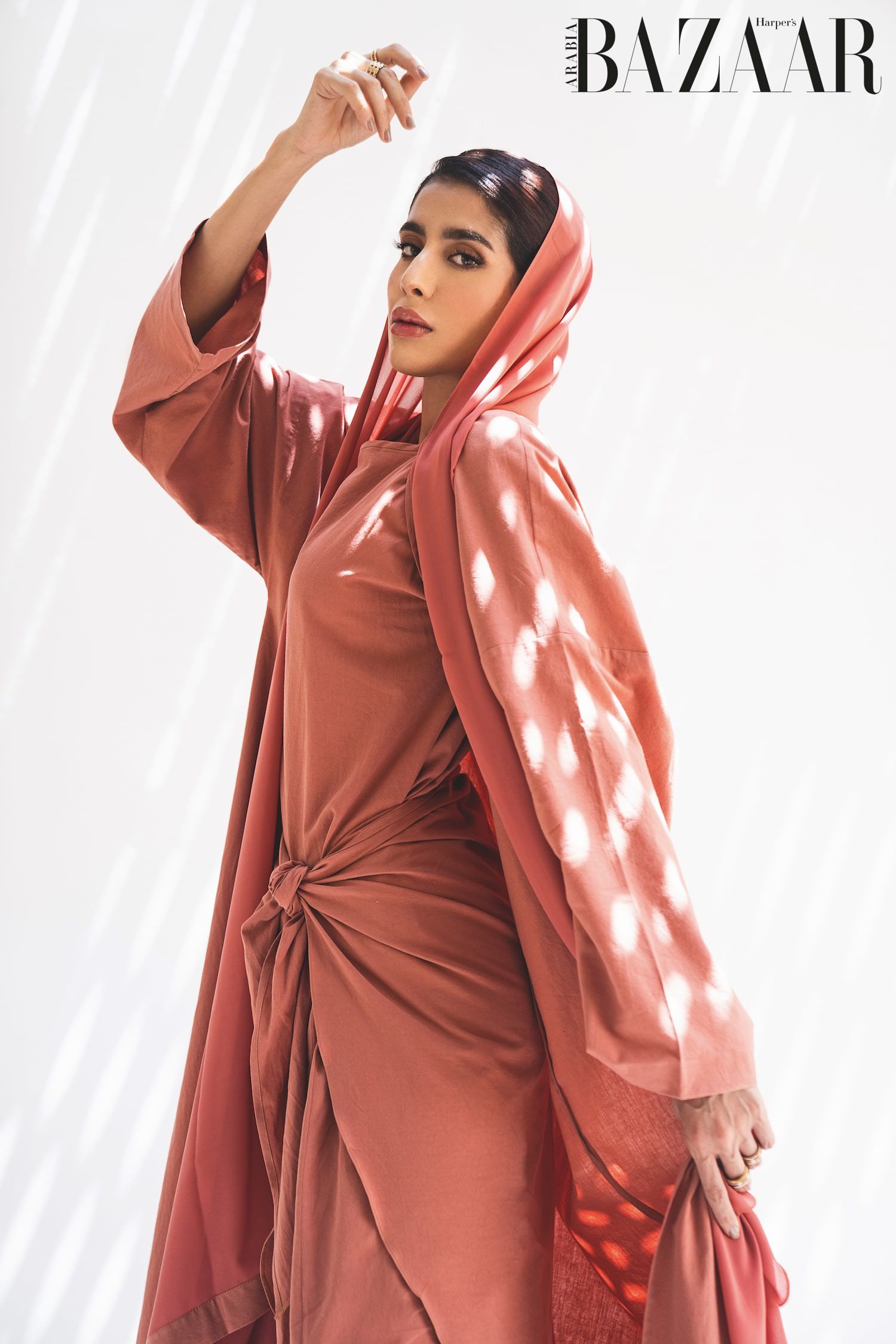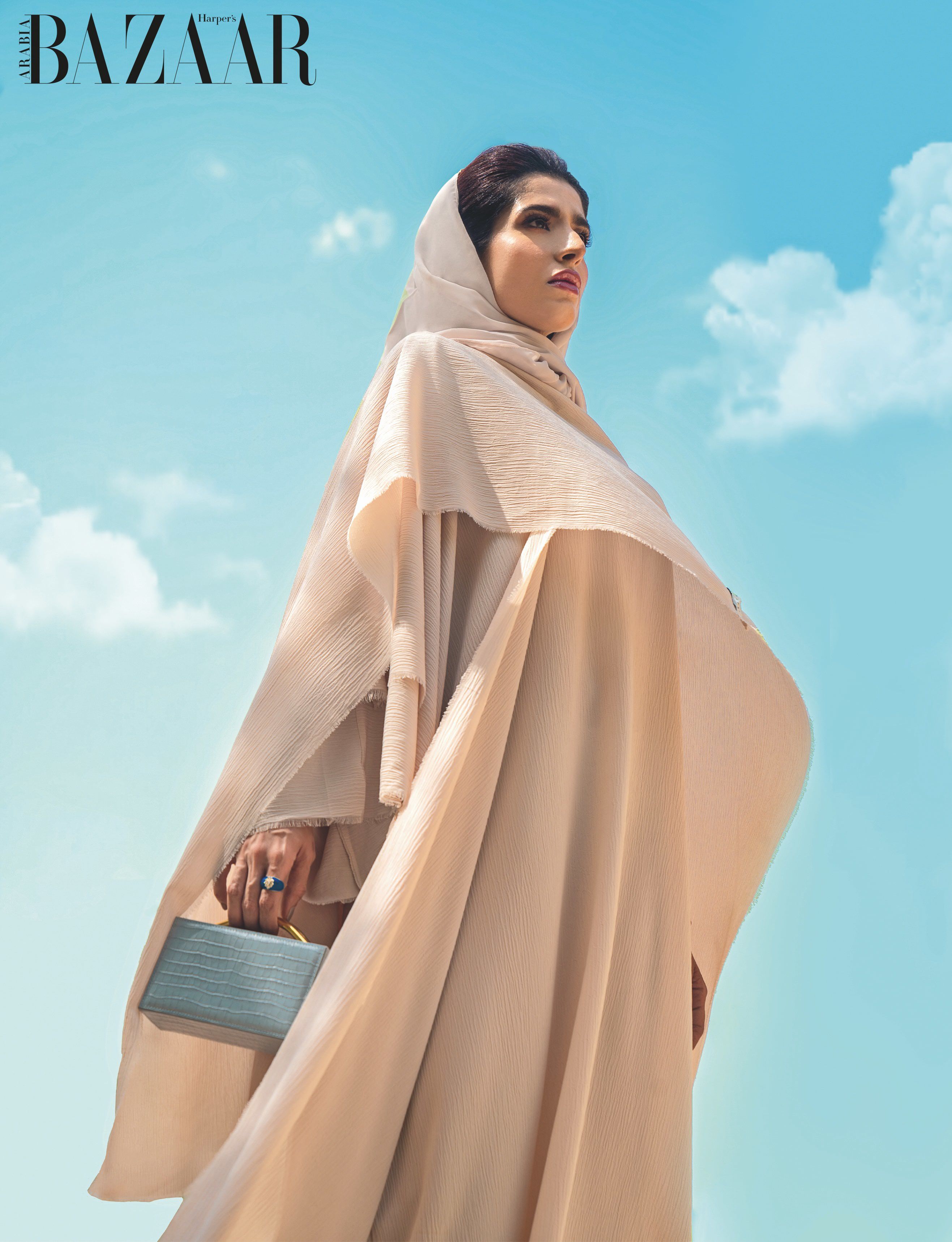
The Story Of The Abaya: 4 Saudi Brands Share Their Thoughts On The Evolving Wardrobe Staple
Khulood Ahmed charts the colourful progression of the abaya, sitting down with some of KSA’s most creative new interpreters…
When the word ‘abaya’ is mentioned in the Middle East, it is generally the long, black coverup that women wear outdoors that comes to mind. But in the past few years, the abaya has evolved way past its traditional form and is now frequently presented in various iterations, all the while, still preserving its role as a traditional garment worn with a hijab – or, as it’s called locally, ‘tarha’ – when leaving the house.
Dr. Laila Al-Bassam, Professor of Fashion History and Traditional Textiles at the College of Arts and Design in Riyadh’s Princess Nourah University, confirms that the classic black abaya, which resembles a traditional piece of menswear called a ‘bisht’, pervaded all regions with the unification of the Kingdom of Saudi Arabia, telling us, “Women didn’t wear abayas in many regions at the time – even in the villages of Najd, the traditional dresses were modest and covered by themselves, and in the cities of Hijaz, there were various forms of traditional garments that women used to wear when leaving the house.
Then the silk abaya appeared. It was worn like a shawl and carried on the arms to show the dress underneath. This abaya was worn by young women specifically, and after that came the shoulder abaya that was floor-length, then the modern abaya, which resembles the men’s ‘dagla’ in its design and became different in its colours and fabrics until it changed into an area of creative design and trade.”
Dr. Laila believes that the era of openness in abaya designs began in recent years, explaining, “Ten years ago, women who came from Jeddah wore coloured abayas, unlike Riyadh, where they were predominantly black.” Today, abayas are diverse, colourful and creative, with Saudi designers in particular drawing aesthetic inspiration from their country’s rich heritage.
We have now started to see the abaya progress from a robe worn just when going out, to part of women’s everyday wear. Some designers have begun to create a matching underdress, which Dr. Laila approves of wholeheartedly, as she believes that it has “created a modest appearance in line with the concept of the abaya… and I think the tarha is also important in order to maintain our appearance in public places. It is a symbol of our Saudi identity and it should not be overlooked.”
Bazaar meets four of the female designers behind the innovative brands changing the scene…
Salu

Salu was founded in 2018 by designer Sara Suleiman who believes in taking the abaya out of its traditional guise
How would you describe your designs?
A mixture of elegant and functional, with a primary focus on selecting luxurious fabrics and elaborate tailoring locally.
How did you start designing abayas?
All the abayas I create were originally mine that I had designed for myself. When my friends and relatives began asking me to design for them, too, I founded the Salu brand.
What are Salu’s bestsellers?
Tastes differ from one customer to another, but the most sought-after abaya is one that is lined in a different colour. Clients request it in a variety of shades; mostly brown, white and purple, and it is reversible, making it a super-practical option as well.
Nora Al Shaikh

After designing ready-to-wear collections for almost 10 years, Nora Al Shaikh has recently pivoted to abayas too
How did the development of abaya designs over the past few years impact your approach?
People have become far more open to wearing different kinds of abayas which gave me the opportunity to be more creative, so more recently I’ve incorporated abayas into my collections.
What are the big abaya trends?
Simple styles with a modern twist; like a blazer cut, for example.
What is the future of the abaya?
Abayas with a matching undergarment have found popularity among my clients, as well as the abaya becoming part of daywear itself, not only outerwear.
Capa

Capa was founded in 2019 by designers Rasha Alnuwaiser and Maram Alhunaiti
How would you describe your aesthetic?
Elegant, colourful and modern.
What are your bestsellers?
The abayas with matching undergarments have found real popularity among our customers, while our more fashion-forward fans have been choosing the abaya with an inner jumpsuit.
What do you see for the future of the abaya in the next few years?
We expect the abaya to become a chic daytime outfit in itself; not just a garment to wear over dresses when you leave the house.
Meem Zone

Young Saudi designer Maha Al Khumees aims to provide creations that suit all women, regardless of age or body type
Tell us about your brand…
It was established in 2017 with a collection of abayas inspired by the design of the kimono. I focus on minimalistic design with variety of cuts and shapes.
How do you think traditional abayas have changed over the years?
Abaya designs have evolved radically since I founded my brand, which opened up a wide arena for creativity for us. I didn’t intend to enter the field of designing abayas, I wanted to start a ready-to-wear line, but I found a bigger space to be creative with abayas.
What is the future of the abaya?
I think that it will be present in the major brands’ collections as an abaya instead of calling it a long coat or an oversized cardigan, for example.
From Harper’s Bazaar Arabia’s December 2020 issue
From Harper’s Bazaar Arabia’s December 2020 issue
Photography by AISHA ALRUES, Styling by BALQEES BANDAR, Art directon by RUBA FAHAD
